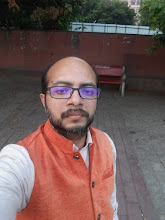We are living in an era where the boundaries between forests and human habitats disappear. Human-wildlife conflicts have intensified to alarming degrees, endangering both human lives and assets. The hilly regions of Kerala have long experienced a high frequency of incidents related to wildlife attacks. A situation has arisen where someone may fall victim to a wildlife attack at any moment.
At present, wild elephants, tigers, gaurs, bears, and wild boars are increasingly encroaching upon human habitats. In Kerala, the districts of Wayanad, Idukki and Palakkad report the highest number of wildlife-related incidents. Instances of human-wildlife conflict in the state have seen a worrying upward trend in the past decade. The Kerala Forest Department identified 273 panchayats in the state as human-wildlife conflict zones, and as per available data, over 1,500 people have lost their lives in the last 15 years. The fatalities resulting from elephant attacks have been on a consistent rise, with more than 100 individuals killed by wild elephants in the last five years. Besides the destruction of crops amounting to crores of rupees, livestock have also fallen prey to attacks by wild animals. Elephants and wild boars have inflicted the most harm on farmers residing near forest fringes.
The Kerala government spent ₹15.85 lakh to capture wild tusker Arikomban, which had instilled fear among the residents of the Chinnakkanal and Shanthanpara regions of Idukki, and translocate it to the Periyar Tiger Reserve in 2023. Arikomban, a rice-loving wild elephant, gained notoriety for its regular raids on ration shops. This rogue elephant killed seven people and inflicted significant damage to numerous houses and ration shops. 'Mission Arikomban' is regarded as the most challenging operation in the history of the Kerala Forest Department.
Kerala, a relatively small state with an average width of 70 kilometres and a population exceeding 3.5 crore, features numerous densely populated communities situated close to protected forest regions. Moreover, many agricultural lands are situated near wildlife habitats. As a result of frequent wild animal attacks, farmers are increasingly abandoning farming in areas adjacent to forests. The absence of a system that offers sufficient compensation for loss of life and damage to crops further contributes to the trend of farmers withdrawing from agricultural activities.
According to experts, farming near wildlife habitats, a significant rise in the numbers of wild elephants, tigers and wild boars, and the movement of humans and livestock during isolated times in wildlife habitats are the main causes of human-wildlife conflict. Additionally, the degradation of ecosystems due to large-scale deforestation and migration under the guise of development, especially the movement of wildlife in search of new grazing areas due to food scarcity and lack of access to water resources, serves as another contributing factor. A report published in ‘Nature Climate Change’ indicates that climate change poses a significant threat to wildlife and their habitats, thereby heightening the likelihood of human-wildlife conflict.
Providing both humans and wildlife with essential space required for their survival can mitigate human-wildlife conflict. In addition to safeguarding forests and natural habitats, it is crucial to establish a 2–3 km buffer zone within the forest surrounding human settlements. Likewise, constructing solar fences and ditches along the forest perimeter can help shield farmers and agricultural lands from wild animal incursions.
The intrusion of wild animals has consistently posed a challenge to humanity. It is now imperative to seek a lasting resolution to the conflict between humans and wildlife.







